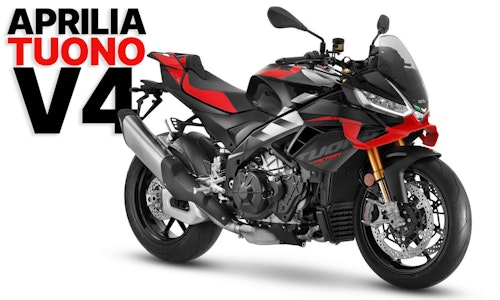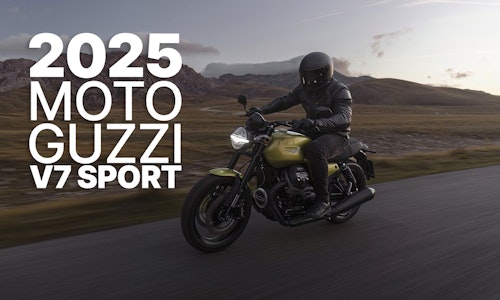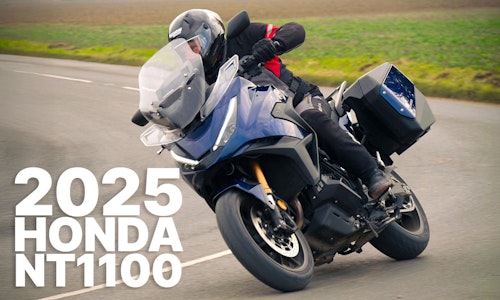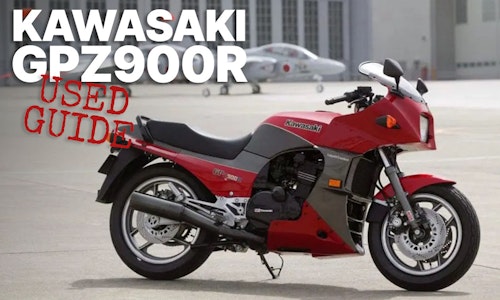KTM 125 Duke (2017) - Review
"Age is foolish and forgetful when it underestimates youth.” The words of the great philosopher Albus Dumbledore may as well have been the driving force behind KTM’s 125 Duke. When it was first launched back in 2011, it was one of very few 125cc machines to treat their teenage target audience with proper respect. The Duke was not a dressed-up cheapskate commuter, nor a “that’ll do, they won’t notice” parts-bin lash-up, but a properly clean-sheet machine. It was fuelled by real research and extensive investment, and presented with the same glamour and energy KTM afforded their big-cc V-twins.
Unsurprisingly, this respect was acknowledged and appreciated by its target audience, who rewarded KTM’s efforts by buying them on a huge scale. The Duke became Europe’s biggest-selling 125 – even more popular than Yamaha’s YZF-R125, or Aprilia’s RS, or any of the myriad more affordable options. The 125 Duke wasn’t cheap – but that was the point. Teenagers don’t want to ride around on half-arsed budget bikes any more than adults do. KTM had shown just how foolish and forgetful most other firms has become.
The 2017 version of KTM’s 125 Duke builds on everything that made that original so popular. It still has the same bespoke engine, complete with all the modern tech you’d expect of a cutting-edge machine: a four-valve head, double overhead cams working through finger followers, fuel injection, water cooling and so on. As before it sits snugly in a tubular steel trellis frame – just like every other KTM road and race bike – but where the original 125’s was a single item, the new bike has a separate bolt-on rear subframe. Not only is this two-part design more in keeping with KTM’s other big bikes, but on a more practical level it potentially makes the bike cheaper to repair in the event of a tumble.
Suspension is still satisfyingly chunky, with a set of fat 43mm upside-down WP forks up front and a preload-adjustable monoshock at the back. But while these parts don’t look any different to last year’s bike, the suspension is actually all-new at both ends, the updated internals offering a substantially smoother ride. The previous Duke’s kit looked substantial but in practice its damping action was crude and felt harsh – it takes less than half a mile to realise the new bike’s suspension is an enormous improvement. It’s the same equipment as on the new 390 Duke but with slightly softer springs which, if anything, gives an even better ride on rough city streets.
Brakes are unchanged, with a four-piston caliper up front biting a 300mm disc. Unlike the new 390 this 125 doesn’t receive a larger-diameter disc for 2017, as its braking power is already plentiful for the engine’s modest power. The 125 also uses organic brake pads, which give a far gentler bite than the 390’s sintered items. It means you need to squeeze harder to get the same stopping power, but offers more feel and is less likely to catch out a less-experienced rider. That said, ABS remains standard (as it has since 2013, when the Duke became the first 125 with an anti-lock system), so novices need not worry about grabbing an instinctive fistful of lever in an emergency.
The riding position has changed slightly – the seat sits 30mm higher and a new handlebar tilts the rider slightly further forwards – but it remains a surprisingly full-size bike. In the grand scheme of motorcycling it might feel small, but the seat-pegs-bar ergonomic triangle isn’t actually cramped even for a grown adult. KTM are smart enough to acknowledge that by the time most teenagers are old enough to have a driving licence, they’ve already done most of their growing – and that a small-displacement engine is no reason to squish the rider up.
And from the new seat, the 125 Duke’s newest party piece becomes apparent: its smartphone-sized, full-colour TFT dash. Older riders might be perfectly happy with motorcycling’s traditional use of dials and gauges and 1980s-style LCD seven-segment numbers, but the Duke’s bright, bold, crisp, clear display blows the display on every other 125 – and most bigger bikes – out of the water. It’s a 21st-century rider’s eye view, for riders who may have been born in the 21st-century.
When you’ve grown up gazing every hour of every day at iPhones, tablets or smartwatches, there’s no reason not to expect the same standard on a motorbike, and the Duke is the first L-plate machine to afford its riders that luxury. And if you spec the Duke with KTM’s My Ride feature – for an extra £25 or so – you can even connect it via Bluetooth to your mobile, and use the switchgear on the left bar to answer calls or control music. And, as before, the Duke’s switchgear is backlit, meaning less night-time fumbling.
It’s not the Duke’s only neat illumination trick either. All the lights are LEDs – from the new headlight unit to all four indicators to the tail-light. It’s a core part of an overall restyle which, includes completely new bodywork, to give a strong resemblance to the 1290 Super Duke R – right down to the fake split down the middle of the sloping headlight. Compared back-to-back with the previous 125 Duke, this new version looks a lot more aggressive, particularly the longer, pointier plastic reaching forwards from the new tank towards the forks, as well as the exposed subframe (neatly highlighted in orange). On the road, it has a huge eye-catching presence.
Even if it doesn’t have an eye-catching turn of speed. As before its performance is set by legislation – maximum power is the 15bhp allowed by young learners, and as before there’s no magic “derestriction” cheat to unleash any more poke. Gearing is unchanged too, so top speed remains the same 65 to 75mph depending on how flat the road is and how tightly you tuck in. Power delivery is nicely balanced – it’s as flexible as a 125 can be, but in practice you simply end up using all 10,000 revs available in every gear to get up to your desired cruising speed. In traffic it’s nippy enough from a standstill to keep ahead of most cars – even the spectacularly aggressive traffic in Turin – when lights turn green, and it’s smooth enough to cruise along at 30mph in fourth gear without any unpleasant vibrations thanks to the engine’s balancer.
The single-cylinder’s sound is slightly muted by the new side-mounted silencer, where the previous bike had an almost invisible under-engine exhaust. This is needed to help it pass Euro 4 legislation, but like most of the changes to the 2017 Duke adds weight. In total 10kg has been added, taking KTM’s claimed dry weight up to a fairly tubby 139kg – that’s 20kg more than KTM claimed for the first 125 Duke, though that bike didn’t have ABS. Taking into consideration the extra 2.4 litres held by the larger steel fuel tank, it’s fair to estimate a fully-fuelled weight somewhere around the 150kg mark. And while that’s still very light in two-wheeled terms, that’s also around 10kg more than Yamaha’s MT-125. When power is in such short supply – and when every 125 makes the same claimed 15bhp – any extra kilos are likely to be noticed, especially in side-by-side acceleration.
At least you can’t feel the extra mass in the Duke’s steering, which remains sharp, quick and accurate without feeling unstable or flighty. In town it’s super-agile, shimmying through gaps in traffic like a salsa-dancing serpent. A slightly shorter wheelbase and fractionally reduced trail give sportier geometry, which helps counter the extra weight, while tyres remain the same visually impressive (if somewhat excessive) 110 front and 150 rear. But where the original 125 Duke wore Indian-made MRF rubber (tolerable in the dry, but sketchy in the wet), our test bike is on more familiar Metzler M5 Interacts. However, KTM couldn’t confirm whether UK bikes will arrive on these – there’s also talk of Michelin tyres being the default choice. Either way, a recognisable brand is definitely preferable to the WTF MRFs.
The new 125 Duke costs £4099 – which sounds a lot in a world of £1500 Chinese bikes, but this doesn’t look, feel or ride like a £1500 Chinese bike. (Though it is made in India, then shipped to KTM’s Austrian factory for final quality control checks.) The KTM is also less expensive than the Aprilia Tuono 125 (£4600) or Yamaha MT (£4372), its two most obvious rivals. Suzuki are due to launch a GSX-S125 later this year, confidently claiming it will have the “best power-to-weight ratio and acceleration” in the class. That remains to be proven, but neither its spindly forks nor its somewhat bulbous headlight design lend it anything like the Duke’s credibility, kudos or desirability.
The first 125 Duke became the smartest, best-looking and most popular bike in its segment by not patronising its audience, not trying to deceive them, but by being the most prestigious, premium offering. This second-generation version follows exactly the same mantra, and in doing so once again moves the 125 goalposts on and into a new level of sophistication and class. Don’t underestimate it.
KTM Duke 125 Specs
Engine type liquid-cooled, 4-stroke, DOHC, 4-valve single
Displacement 125cc
Bore x stroke 58 x 47.2mm
Compression ratio 12.8:1
Maximum power 15bhp @ 10,000rpm
Maximum torque 9lb·ft @ 7000rpm
Fuel system fuel injection, 33mm throttle body
Transmission 6-speed, chain final drive
Top Speed 70mph
Frame tubular steel trellis
Rake 25°
Trail 95mm
Front suspension 43mm upside-down telescopic forks, no adjustment
Rear suspension monoshock, adjustable preload
Front brake 300mm disc, 4-piston caliper
Rear brake 230mm disc, 1-piston caliper
Front tyre 110/70 ZR17
Rear tyre 150/60 ZR17
Seat height 830mm
Wheelbase 1357mm
Ground clearance 185mm
Kerb weight 150kg (est)
Fuel capacity 13.4 litres
Price £4099


